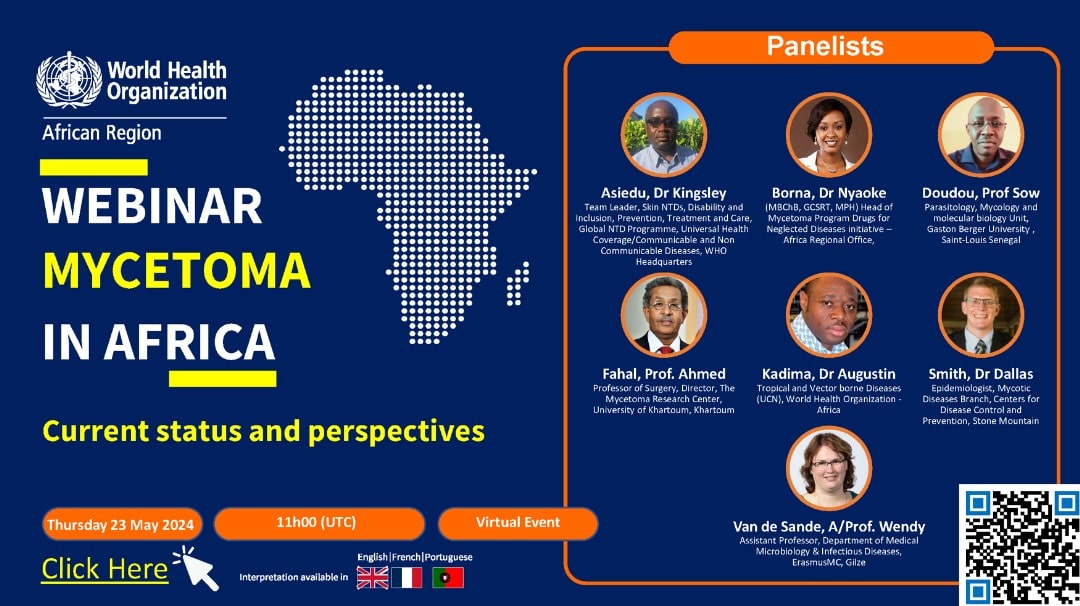Mycetoma in Africa: Current Status and Perspectives

On the 23rd of May 2024, the WHO Afro region organized a significant webinar entitled “Mycetoma in Africa: Current Status and Perspectives.” This event aimed to shed light on the underrecognized and often neglected tropical disease, mycetoma, particularly within the African continent. The primary objective of the webinar was to enhance awareness, foster advocacy, and mobilize resources for better management and prevention of mycetoma, which severely impacts many communities across Africa.
The webinar “Mycetoma in Africa: Current Status and Perspectives” underscored the critical need for a concerted effort to address the challenges posed by mycetoma. By bringing together leading experts and stakeholders, the event highlighted the importance of multi-faceted approaches combining medical, social, and policy measures to improve the lives of those affected by this debilitating disease. The discussions and recommendations from this webinar are expected to drive future actions and policies aimed at eradicating mycetoma and mitigating its impact on the African continent.
The webinar featured a panel of esteemed experts in the field of mycetoma research and treatment:
Dr. Augustin K. Ebeja
Renowned for his extensive research and clinical experience in tropical diseases, Dr. Ebeja provided a comprehensive overview of mycetoma epidemiology and its socio-economic impact on affected populations in Africa.
Prof. Ahmed Fahal
A leading authority on mycetoma, Prof. Fahal shared insights from his groundbreaking work, including recent advancements in diagnostic techniques and treatment protocols that are being developed and implemented at the Mycetoma Research Center, University of Khartoum, Sudan.
Dr. Wendy Van de Sande
Known for her expertise in fungal infections, Dr. Van de Sande discussed the microbiological aspects of mycetoma, highlighting the challenges in identifying causative agents and the importance of accurate diagnosis for effective treatment.
Dr. Doudou Sow
With a focus on public health, Dr. Sow emphasized the need for integrating mycetoma control programmes into broader health initiatives and discussed strategies for improving healthcare access and education in remote and underserved areas.
Dr. Borna Nyaoke
Dr. Nyaoke presented the therapeutic landscape for mycetoma, reviewing current treatment options and the latest research on novel therapeutic approaches aimed at improving patient outcomes.
Dr. Dallas Smith
Bringing a global perspective, Dr. Smith addressed the international efforts in mycetoma research and the importance of global partnerships and collaborations in tackling this disease.
Following the presentations, the webinar facilitated a robust and objective discussion among the participants. This interactive session allowed for the exchange of ideas, experiences, and best practices, culminating in a series of recommendations aimed at bolstering advocacy efforts for mycetoma.
